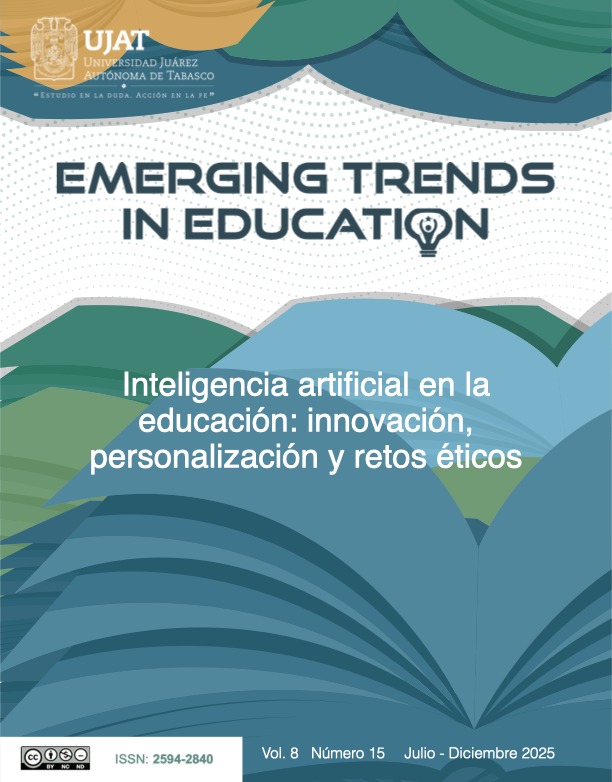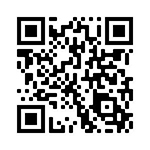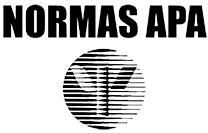The Future of Creative Expression Through Professional Artistic Education: Artificial Intelligence and Human Art
DOI:
https://doi.org/10.19136/etie.v8n15.6333Keywords:
Artificial Intelligence in Education, Human creativity , Art, Ethical implicationsAbstract
Academics from higher education institutions that offer programs in creative fields such as Visual Arts, Plastic Arts, Audiovisual Media, Animation and Visual Effects, Architecture, Cinematography, Communication, and other related areas face the enormous responsibility of developing themselves and preparing to tackle the challenges of this technological transformation. It is imperative to critically analyze how artificial intelligence and new technologies can enrich and transform the field of art. At the same time, it is essential to examine the risks and difficulties associated with the use of new technologies. This presentation directs the reflection toward the revaluation of human creativity and artistic expression through the study of algorithms that imitate human creativity employed in artificial intelligence. To this end, a systematic literature review is conducted to identify the differences that exist between human creativity and the training of AI algorithms. We believe that academia should serve as a space for reflection on the impact of artificial intelligence on creative work. Likewise, the new generations of professionals must possess elements that enable them to recognize, appreciate, and defend the intrinsic value of their creative work, which is irreplaceable. An analysis of the ethical consequences of using generative artificial intelligence in the creative field will trigger relevant discussions about the rights of artists and the value of original artwork, guiding actions toward regulatory frameworks that protect original creations.
References
Acha, J. (2005). Acha Juan Expresión y apreciación artísticas. Trillas. https://www.academia.edu/41577364/Acha_Juan_Expresion_y_Apreci
Ackermann, T. J. (2020, November 29). GPT-3: A robot wrote this entire article. Are you scared yet, human? https://www.bgp4.com/2020/11/29/gpt-3-a-robot-wrote-this-entire-article-are-you-scared-yet-human/
Aguilera, A. (2024, August 13). Teoría asociacionista de la creatividad. Psocología y Mente. https://psicologiaymente.com/inteligencia/teoria-asociacionista-creatividad
Alieva, I. (2023). How American Media Framed 2016 Presidential Election Using Data Visualization: The Case Study of the New York Times and the Washington Post. Journalism Practice, 17(4), 814–840. https://doi.org/10.1080/17512786.2021.1930573
Al-Khazraji, L. R., Abbas, A. R., & Jamil, A. S. (2023). A Systematic Review of Deep Dream. Iraqi Journal of Computer, Communication, Control and System Engineering, 23, 192–209. https://doi.org/10.33103/uot.ijccce.23.2.15
Anantrasirichai, N., & Bull, D. (2022). Artificial intelligence in the creative industries: A review. Artificial Intelligence Review, 55(1), 589–656. https://doi.org/10.1007/s10462-021-10039-7
Ascott, R. (2000). Art, Technology, Consciousness: Mind@large (1st ed). Intellect Books Ltd.
Boden, M. A. (2009). Computer Models of Creativity. AI Magazine - Wiley Online Library, 30(3), 23–34. https://doi.org/aimag.v30i3.2254
Boden, M. A. (2018). Thinking intelligently about artificial intelligence. The British Academy. https://www.thebritishacademy.ac.uk/publishing/review/34/british-academy-review-34-thinking-intelligently-about-artificial-intelligence/
Cohen, P. (2016). Harold Cohen and AARON. AI Magazine, 37(4), 63–66. https://doi.org/10.1609/aimag.v37i4.2695
Cota-Rivera, E. I., González Correa, M. E., Bernal Marín, L. A., Marquez Montenegro, M. Y., Herrera, A. M., & Martinez Martinez, M. A. A. (2024). Transforming Education With the Power of Artificial Intelligence: Case Studies. In Ş. Ş. Demir & M. Demir (Eds.), Advances in Higher Education and Professional Development (pp. 113–140). IGI Global. https://doi.org/10.4018/979-8-3693-1666-5.ch006
Esling, P., & Devis, N. (2020). Creativity in the era of artificial intelligence (No. arXiv:2008.05959). arXiv. https://doi.org/10.48550/arXiv.2008.05959
FasterCapital. (2024). Exploración Creativa. FasterCapital. https://fastercapital.com/keyword/exploración-creativa.html
Ferrer, R. (2018). Mágica belleza. El pensamiento mágico como fundamento original de la teoría del arte [Ph.D. Thesis, Universitat de Girona]. In TDX (Tesis Doctorals en Xarxa). https://www.tdx.cat/handle/10803/664425
Gaki. (2024). Los Algoritmos de la Creatividad – Laboratorio Gaiki. https://gaiki.org/los-algoritmos-de-la-creatividad/
González, M. A. (n.d.). LA CREATIVIDAD Y LA IMITACION EN EL ARTE DEL ENCAJE. Biblioteca Virtual Miguel de Cervantes. Retrieved February 25, 2025, from https://www.cervantesvirtual.com/obra-visor/la-creatividad-y-la-imitacion-en-el-arte-del-encaje/html/
Goodman, D., & Keene, R. (1997). Man versus machine: Kasparov versus Deep Blue. H3 Publications.
Granter, S. R., Beck, A. H., & Papke, D. J., Jr. (2017). AlphaGo, Deep Learning, and the Future of the Human Microscopist. Archives of Pathology & Laboratory Medicine, 141(5), 619–621. https://doi.org/10.5858/arpa.2016-0471-ED
Hassine, T., & Neeman, Z. (2019). The zombification of Art History: How AI resurrects dead masters, and perpetuates historical biases. Journal of Science and Technology of the Arts, 11(2).
Heaven, W. D. (2023). La IA generativa no necesita ser inteligente para amenazar el trabajo creativo. MIT Technology Review. https://sitiosfuente.info/ciencias/29864-ia-generativa-necesita-ser-inteligente.html
Lamers, M. H. (2023). A Computer Scientist’s View on Machine Learning and Creativity. In C. Anutariya & M. M. Bonsangue (Eds.), Data Science and Artificial Intelligence (pp. 325–335). Springer Nature. https://doi.org/10.1007/978-981-99-7969-1_24
Latar, N. L. (2018). Robot Journalism: Can Human Journalism Survive? World Scientific.
Makhmutov, M. T., Varouga, S., & Brown, J. A. (2020). Survey on Copyright Laws about Music Generated by Artificial Intelligence. ResearchGate. https://doi.org/10.1109/SSCI47803.2020.9308449
Mantenga, M. (2022). No soy un robot: Construyendo un marco ético accionable para analizar las dimensiones de impacto de la inteligencia artificial. http://hdl.handle.net/10908/19109
Mapondera, M. (2019, May 10). Dancing with a machine: Bill T. Jones on AI and art. Google The Keyword. https://blog.google/technology/ai/bill-t-jones-dance-art/
Nake, F. (2019). Georg Nees & Harold Cohen: Re:tracing the origins of digital media. In Georg Nees & Harold Cohen: Re: Tracing the origins of digital media. Edition Donau-Universität. https://doi.org/10.25969/MEDIAREP/13340
Newborn, M. (1997). Kasparov versus Deep Blue. Springer. https://doi.org/10.1007/978-1-4612-2260-6
Paiva, M. A. (2024, July 7). La inquietante opinión de Noam Chomsky sobre la Inteligencia Artificial. La Tercera. https://www.latercera.com/tendencias/noticia/la-inquietante-opinion-de-noam-chomsky-sobre-la-inteligencia-artificial/4ZPWD57F45EWVLX5XUB6QURJMA/
Park, S., Bokijonov, S., & Choi, Y. (2021). Review of Microsoft HoloLens Applications over the Past Five Years. Applied Sciences, 11(16), 7259. https://doi.org/10.3390/app11167259
Tatarkiewicz, W. (2002). Historia de seis ideas: Arte, belleza, forma, creatividad, mímesis, experiencia estética (7a. ed. en la Colección Neometrópolis). Tecnos Alianza Editorial.
Yu, Y., Binghong, Z., Fei, G., & Jiaxin, T. (2020). Research on Artificial Intelligence in the Field of Art Design Under the Background of Convergence Media. IOP Conference Series: Materials Science and Engineering, 825(1), 012027. https://doi.org/10.1088/1757-899X/825/1/012027
Zivanovic, A. (2005). The development of a cybernetic sculptor: Edward Ihnatowicz and the senster. Proceedings of the 5th Conference on Creativity & Cognition, 102–108. https://doi.org/10.1145/1056224.1056240
Zulic, H. (2024). How AI can Change/Improve/Influence Music Composition, Performance and Education: Three Case Studies. ResearchGate, 2, 100–114.
Downloads
Published
Issue
Section
License
Copyright (c) 2025 Emerging Trends in Education

This work is licensed under a Creative Commons Attribution-NonCommercial-NoDerivatives 4.0 International License.





























